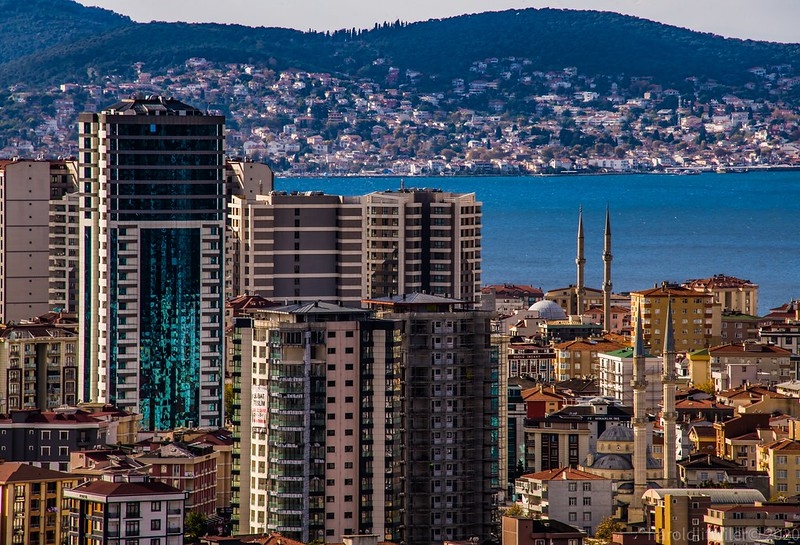
- Close
04/03/2021 | Istanbul
An Overview of Multi-Hazards and Risks in Turkey

Multiple disaster risk refers to a case when one disaster triggers another disaster or disasters, resulting in an increase in the loss of life and property. For instance, heavy rains can trigger floods and these floods can trigger landslides, respectively. Similarly, earthquakes can trigger landslides and then fires. In recent years, the effects of climate change have been increasing due to industrialization, rapid urbanization processes, and deterioration in the ecological system, increasing the rate of disasters, including climate change itself. This year has emphasised the significance of epidemic risk and the notion of ‘collective hazard risk’ has become an issue that needs to be fully explored and understood.
Global warming and climate change lay in front of us as the factors increasing the risk of multiple hazards the most. Extreme temperatures trigger forest fires. The most striking recent example of this is in the Australian fires that started in the summer of 2019 and lasted for eight months. More than one billion animals lost their lives in these fires – a UN report released in 2019 emphasised the links between extinction of animal species, biodiversity loss and threat to human society.
Extreme temperatures also bring the risk of drought. Research has revealed that 63% of meteorological disasters were caused by climate change. Heatwaves represent 46% of such events, while drought accounts for 21%, and heavy rains or floods account for 14% [1]. In 2015, 2016, and 2017, the total number of recorded meteorological disasters in Turkey is as follows: 731- 654- 598. Thus, these three years stand out as the years when most meteorological disasters were seen in the history of the country since the 1940s [2]. Kazandere dam, one of the most important water resources of the Thrace region, has almost completely dried up due to the low rainfall in the winter months of 2020.
One of the most striking examples of extreme rainfalls and floods caused by climate change took place in the Eastern Black Sea region of Turkey on August 22, 2020. The amount of rainfall per square meter exceeded 100 kg, causing up to 10 deaths and many injuries. More than 20 buildings were destroyed, and more than 350 buildings and infrastructure facilities were significantly damaged. According to meteorological data [2], floods and landslides occurred in many districts of Giresun, one of the major cities in the Eastern Black Sea region of Turkey. In August 2020, the city of Giresun received the highest August rainfall since 1999. While the flood caused the village roads to be closed to transportation and the electricity cut, the damage to workplaces made it difficult to reach clean water, food, and hygienic products. We should note that even though the disaster was caused by excessive rainfall, the ground permeability, and the effect of human activities on the water cycle can hardly be ignored. This disaster in Giresun greatly damaged the tent areas of seasonal agricultural workers who had to settle in stream beds in order to have easy access to water, as it coincided with the hazelnut harvest, an important period for the region. Many tents were flooded due to heavy rainfall, and the quality of living for seasonal workers who already face challenging conditions was heavily affected.
The effects of climate change on buildings is the topic of increasing research. It has been shown that the natural vibration frequencies of historical buildings change up to 20% with the effects of temperature, humidity, wind, and rainfall [3]. Natural vibration frequency is a term that expresses the natural oscillation of the structure without affecting any external load. In historical buildings, the increase in temperature causes the materials to expand, closing the cracks and increasing the rigidity of the structure [4]. The increase in stiffness can increase the earthquake load on the building. Therefore, the increase in average temperature can increase vulnerability in historical buildings in terms of earthquake load. This effect is seen widely in historical buildings, and its effects on other buildings vary according to the characteristics of the building. In addition, fire, chemicals, humidity, and changes in temperature can also reduce the strength of structural elements and change the structural behaviour when a potential earthquake happens.
It is certain that disasters and risk associated with natural, technological and biological hazards interact with each other and require joined-up risk analysis and management frameworks. To demonstrate with recent examples, the 22 March Zagreb earthquake, the explosion in Beirut on 4 August, the 23 June Çatalca tornado, the 9 September Tekirdağ earthquake that also affected the city of Istanbul, the 23 August Giresun flood, the sandstorm in Ankara on 12 September, all took place during the Covid-19 pandemic. In a short time after the Zagreb earthquake, there was a 100% increase of Covid-19 cases and a 300% increase after the Beirut port explosion [5]. Although there is no direct relationship between hazard physics and biological hazards, risk and impact are deeply connected through human vulnerability, so it can be said that hazard impacts increase the vulnerability of society to epidemic diseases. Especially in cities with dense settlements, people leave areas exposed to hazard for their relatives or they stay in collective shelters. This makes the spread of epidemic diseases amongst already vulnerable populations more likely.
It is clear that multi-hazard risk is an increasingly prominent problem that threatens human health and social life. Turkey is one of the countries most affected by this increasing danger. Tomorrow’s Cities is conducting necessary research to reduce the risk of multi-hazards, and endeavours to reduce the loss of life and economic losses by evaluating multiple disaster risk scenarios, especially in areas where urbanization and population density is high.
Click here to learn more about Tomorrow’s Istanbul’s research
References
[1] Carbonbrief website (www.carbonbrief.org )
[2] General Directorate of Meteorology (www.mgm.gov.tr)
[3] Cakti, E., Dar, E., (2015). Long-term Dynamic Response of Hagia Sophia in Istanbul to Earthquakes and Atmospheric Conditions, International Workshop on Structural Health Monitoring, Stanford University
[4] R. M. Azzara, G. D. Roeck, M. Girardi, C. Padovani, D. Pellegrini and E. Reynders, (2018). The influence of environmental parameters on the dynamic behaviour of the San Frediano bell tower in Lucca, Engineering Structures, Vol. 156, pp. 175-187.
[5] en.wikipedia.org/wiki/2019%E2%80%9320_Australian_bushfire_season


